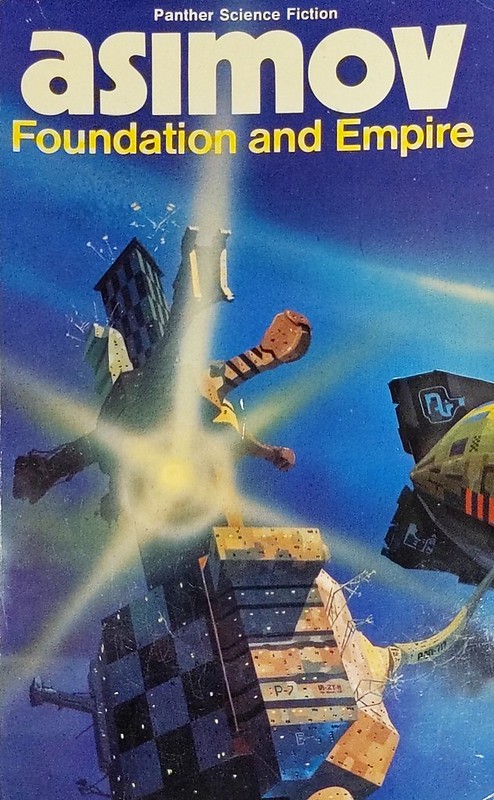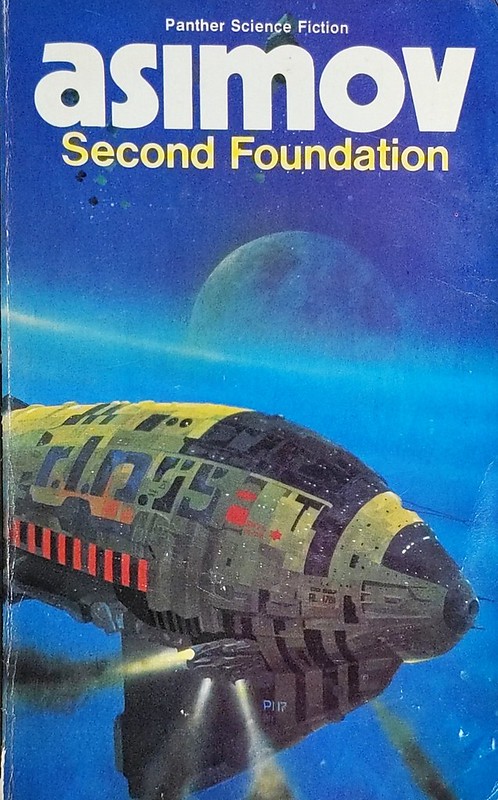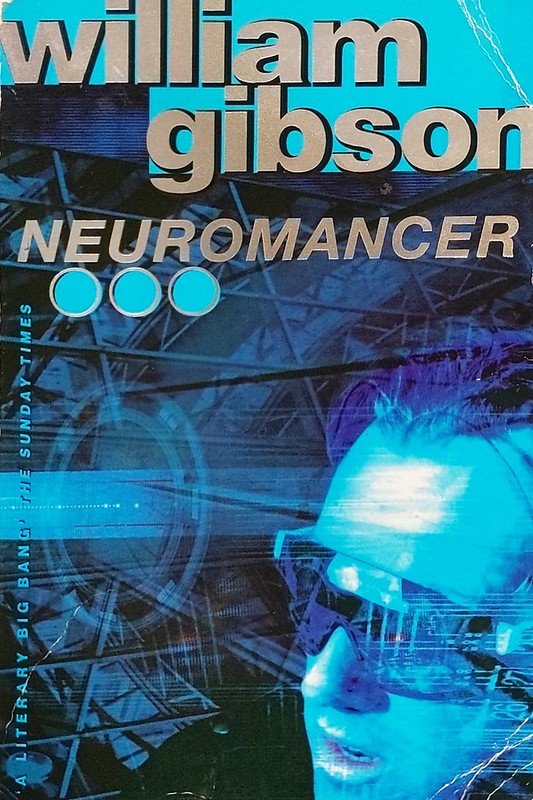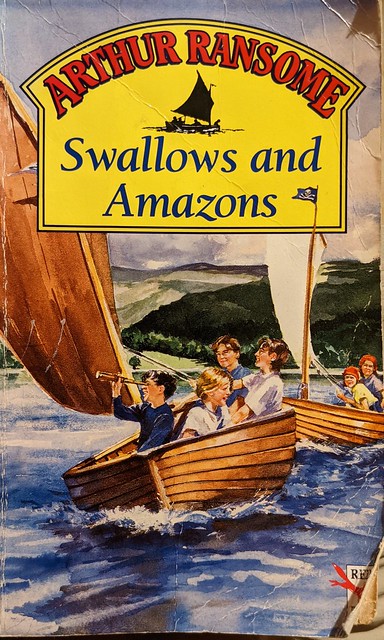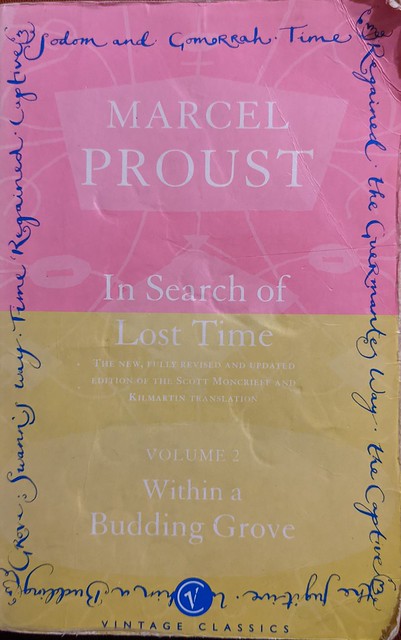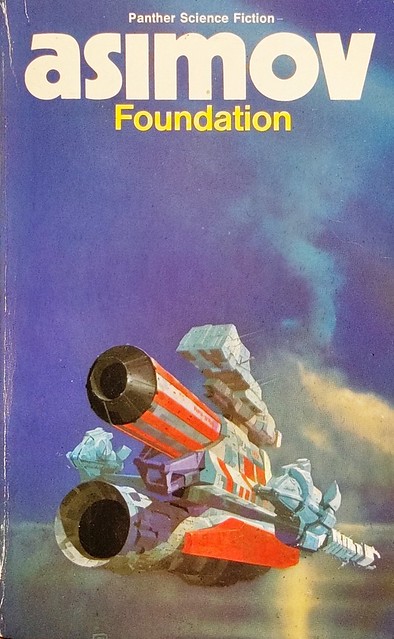
A moment ago
reviewing Neuromancer, I said it was one of the books you should read, like Foundation. But F - and F+E and SF - are rather
more foundational that N is.
Plot: in the far future, the galactic empire is falling, though this is only perceptible to the enlightened. Hari Seldon, via the mathematics of psychohistory, foresees collapse and millennia of barbarism before a new empire; and devises a plan to shorten the interregnum to a single millennium. F is then a series of short stories about the initial growth of this Foundation. F+E is half about the conflict with the remains of the old empire, and half about the Mule, who disrupts the Plan. SF is half about stopping the Mule, and half about restoring the plan back onto its tracks. And the series ends, perhaps wisely, only 400 years into the 1kyr plan.
On this (re-)re-reading, I found F, and the second half of SF, most fun. The Mule bits drag somewhat.
Since this is about philosopher-kings wisely predicting and controlling the future, you might have your doubts about whether this is all really a good idea. The SF folk tell us their plans at one point: the Foundation will provide the physical empire, into which the SF will naturally step as wise benevolent rulers. It is hard to see that working (half of SF is about how much the first hates the second and wants to destroy it), or being desireable. This aspect is poorly worked out: Asimov has no theory of govt, other than the vague Platonic leanings that people who aren't really thinking tend to have: "wouldn't it be nice if...".
As to psychohistory: the idea that history might be predictable with untold billions across millions of stars is perhaps at least plausible enough for the story. That one could do it via mathematical equations in the way described is not; nowhere in the analysis as described does the vast amount of data that would be needed come in. But that isn't the main problem either. The main problem is the interventions or crises, which "constrict possibilities to keep the plan on track". I think that there's no way to design these in; because Seldon had so few degrees of freedom to work with, at the start. At one point Bayta says that the entire point of the plan is to design a better society than the empire; and it is again hard to see how Seldon has enough d.o.f. to do that.
Looking at
Goodreads, I see that many people downgrade it for
One-dimensional characters engaged in various trade negotiations, political upheavals and general planning. Dry beyond belief. I think that's a fundamental misunderstanding. If you want to read Great Literature, do that. But only a fool would complain that Great Literature contains no spaceships. More intelligently
I was made to believe that this is a SF book. It isn’t. Not really. It is more of a socio-political one. This is kinda true, but also true of many many other things: that many books are "isomorphic"; or are about draping a new skin on old ideas. Star Wars is just Cowboys in Space; Top Gun is just Cowboys in Airplanes. And in fact, this story fits better into its galactic context than many another would. My Goodreads review (which mostly points back here)
is here.
Quibble: the Student is inducted by the First Speaker and finds that the Prime Radiant can, effectively, read his mind. WTF? The PR is a first-empire construct; there's no way they had any such devices. This is kinda careless by Asimov, because it isn't needed for the story.
Quibble: Asimov is obliged to invent hyperspace to magic away the distances between the stars. And he invents some ill-defined rules - for example, you can't jump too close to the surface of a planet - as everyone does. But he doesn't get the consequences right; one of which is that the concepts of "trade routes"; or the edge being "blocked" from the centre by an intervening province; is meaningless. Space is so vast, that a ship popping out of hyperspace to prepare for the next jump couldn't possibly be found. Incidentally, he has no real invention for whatever "radar" allows ships to be detected from parsecs away. Really, the setup he describes is analogous to road travel on a continent.
Space is so vast: a thought I've been thinking for a while so I'll write it down: is it the case that the ratio between the distances between stars, and the sizes of solar systems, is the largest such distance ratio? I think the distances between galaxies are comparatively tiny; as are the distances within atoms, or molecules, or within solar systems. Update: this is visible visually? See for example "what Amndromeda would look like if it were bright enough".
Quibble: when Bayta and Toran land on Haven, they brace against acceleration. Why? Artificial gravity has been solved long since; when Gaal lands on Trantor there's no bracing.
Quibble: when Barr and Devers are on Trantor, they are frequently outside. When they blast a hole in the bureaucrat's office, sunlight floods in. And yet when Seldon is there, everyone is inside always.
Quibble: society in 50 kyr has not moved on from 1950's USA. Men estimate women's weight by their upper arms; everyone smokes; and so on. Not only that, but societal mores are undifferentiated across the galaxy. Nor does society change in the centuries of the plot we see.
Quibble: when they turn up at Trantor and try and find somewhere, it is difficult because the planet is a uniform sea of metal. But this is silly: Trantor's rotation rate is accurately known, predicting the position of any given lat/lon centuries into the future would be nothing. And notice they have no trouble finding the planet in its orbit.
Quibble, that applies to almost all old SciFi: some of the "astonishing" new tech they develope during the plot - say, the new galactic star-finding thing for navigation - now seems charmingly primitive.
In F+E, Bayta diagnoses the Empire's fall as "despotism, inertia and maldistribution of goods". But does this make sense? I think we can't tell, but on the whole, no. They've somehow ended up in a society where science has run out; old things work so well that there's no need to invent new, and even learning that science is no longer useful, compared to just polishing the brass work, that people forget how things work. At least, that's the bit we see. We don't see any maldistribution. We do have Onum Barr's tales of the terrible things that happen during the suppression of the "rebellion", which would indeed fit "despotism". I think the premise of scientific and societal uniformity across so vast a space isn't plausible either.
So the story is fun to read, and is fun to pick apart - unlike much of SciFi, which is so magical that there's no point trying to pick holes. And - if you're new to the series - each crisis is effectively a puzzle, a detective story, that you can try to solve if you like. And the events are sufficiently unmagical that attempts at prediction are possible.
 I don't seem to have a post on either LOTR or TDI1, which surprises me. But here's a fragment from the Fellowship of the Ring:
I don't seem to have a post on either LOTR or TDI1, which surprises me. But here's a fragment from the Fellowship of the Ring:
